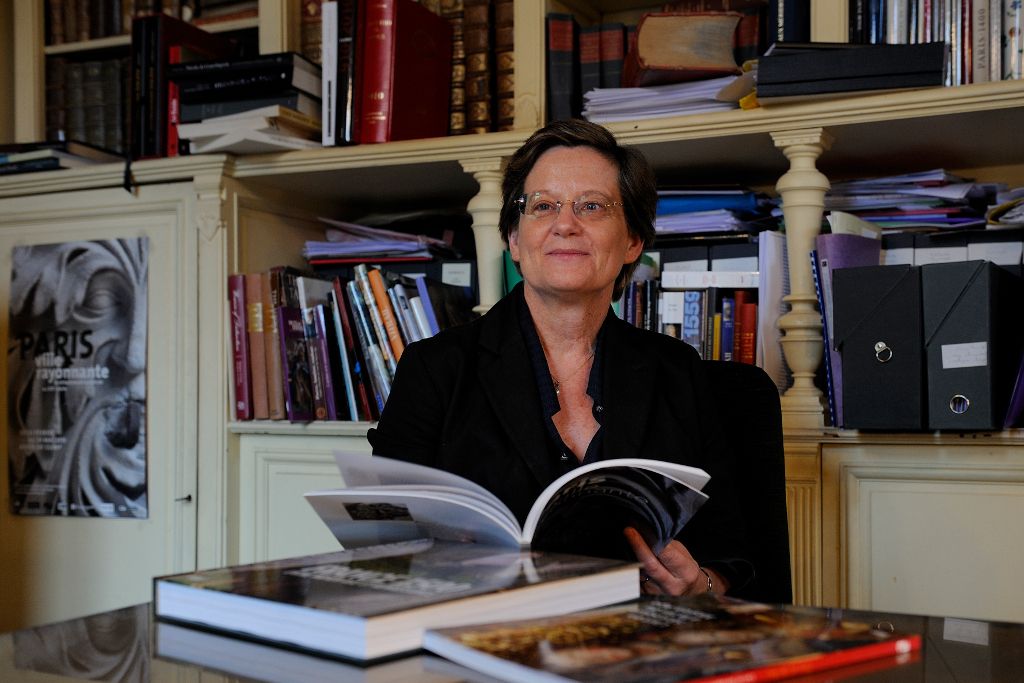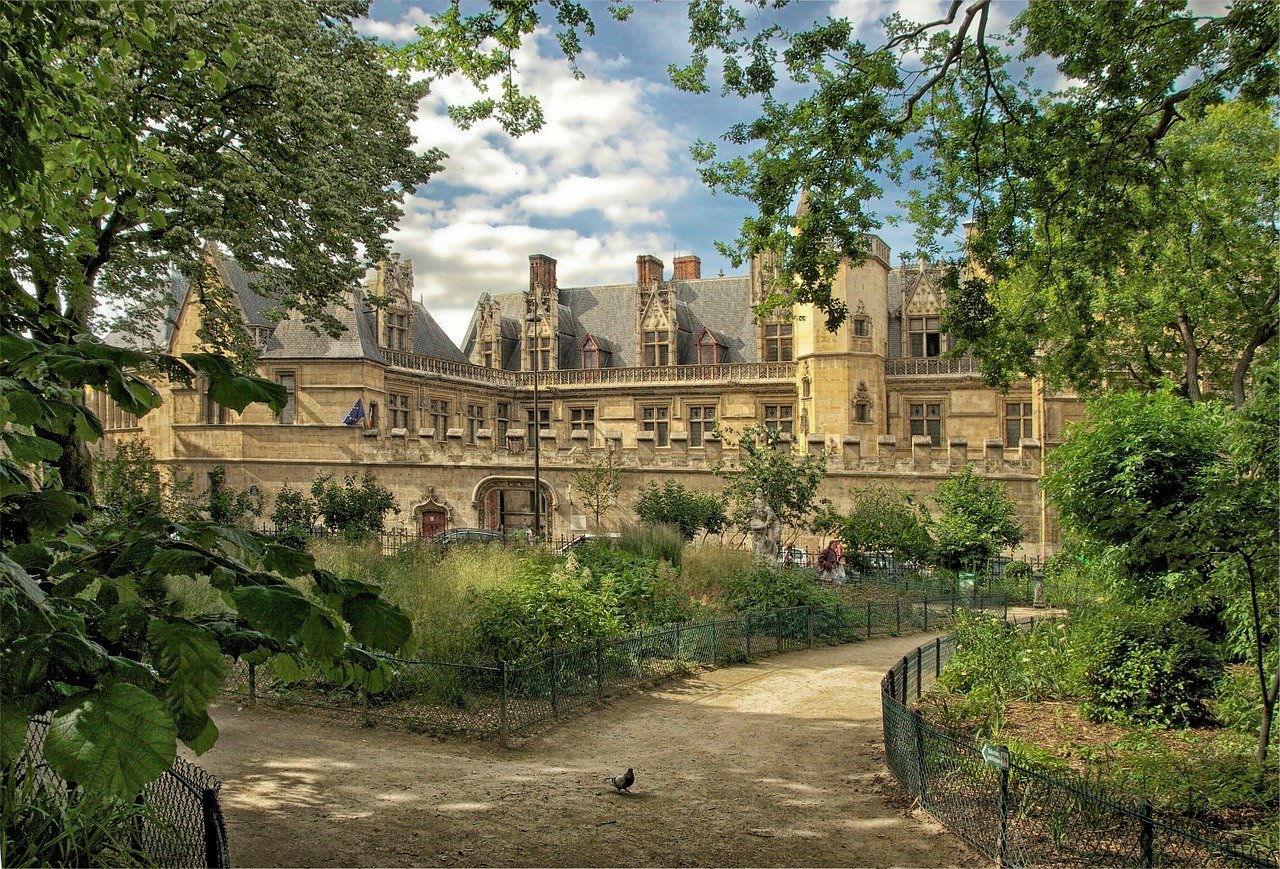Interview with Elisabeth Taburet-Delahay, director of the Cluny Museum.
Elisabeth Taburet-Delahay, director* of the Musée de Cluny talks about the most important gallo-roman monument north of the Loire River, yet just a stone's throw from Boulevard Saint Germain in Paris.
By Fiona Scott Lazareff
1 March 2015

© Bertrand Rieger
The chances are that you won’t have heard of the Musée Cluny unless you live in Paris or you’re a fan of the Middle Ages. As Elisabeth Taburet-Delahay, director of the museum says, “even though we are steps away from Boulevard Saint Germain and Boulevard Saint Michel, it’s not well known. When you walk past you think ‘here we have an ancient monument’, but not many people know what it is." In fact, the Musée Cluny, known also as The Musée de Moyen Age et Thermes, is tucked away in the heart of the Latin quartier (or the 5ème). The museum itself is in the Hôtel Cluny. For the uninitiated hôtel doesn't mean a place in which tourists stay: it means a palace or town mansion. It’s built on the remains of the third century Gallo-Roman baths, which are worth a wander in their own right.
Built between 1485 and 1510, the hôtel has been the home of a succession of notable people starting with the Abbots of Cluny, passing by Mary Tudor and including even a doctor who used the vast Frigadorium with its massive Gothic vaults as a dissection room. Parts of it are Gothic, others Rennaissance. In 1843 it was turned into a museum to preserve relics of France’s Gothic past.
Taburet-Delahay explains: “Not only is this the most important Gallo-roman monument North of the Loire River, but it is also the oldest of the rare civilian structures dating back to the middle ages”.
I am talking to Taburet-Delahay in her office, a delightful and very special room which is surely a great source of inspiration: “in 1843, when the museum opened, it was the office of the first director of the museum. He was the son of Alexandre Du Sommerard, one of those late-19th century art collectors fascinated by the medieval era. In 1843, when the creation of the Musée Cluny was decided upon and the state bought Alexandre Du Sommerard's collection, as well as the buildings that now form the Cluny Musée Cluny, his son was appointed the director."
Thinking what an enviable job she has, I ask Taburet-Delahay how she came to be the director of the Musée Cluny.
“Before being director here, I studied History and History of Art, graduated, and became a curator in this museum. It was a fascinating period, especially as it coincided with the discovery of the sculptures of the Kings of Judas from the Notre-Dame de Paris Cathedral. I then worked as a curator in the Louvre, mainly on jewelry. I remained curator for artworks in the Louvre during the early 2000’s when Viviene Duchar, the director of the Musée Cluny, tragically died. The president of the Musées de France wanted a curator who was both a specialist in and passionate about the Middle Ages; that is how I ended up here in November 2005."
Taboret-Delahay, says that she developed an interest in art “at the same time as my passion for history, a common occurrence for french people. History and History of Art are strongly interlinked, and I read a lot of books, some of them illustrated, and started showing interest in the middle ages at a young age. My interest in the middle ages and art slowly mutated into a passion for slightly more aesthetic medieval aspects.”
She was quickly seduced by the Mediaeval Age. “Maybe because the Middle Ages is a period to which we can relate. Our cities are strewn with cathedrals and other buildings that date back to the Middle Ages, and there is often a trace of medieval structure to be found in our modern cities. What came first was history, literature, stories, romance. The idea of romance was invented in the Middle Ages. And then at the same time, there is an extraordinary aspect of fantasy with the Middle Ages: Chivalric romance, tales of travel, we have an exhibition on travel here, right now”.
Like most museum directors, Taburet-Delahay is responsible for the administrative part of the museum and the organisation of exhibitions. “We are a museum of average size that is effectively dedicated to a period which is established on an archaeological site, so my role is one of definition of drive and direction, the definition of projects and finally the organisation." This involves supervising and monitoring a team of curators, archivists, researchers and administrative personnel. But it isn’t just about conserving monuments and works, there is also the job of looking after the public”, Taburet-Delahay tells me.
The Musée Cluny might not be on the tour operator’s beaten track, but over 300,000 visitors find their way to its door each year. “For Paris, it may look insignificant, considering there are 10 million visitors to the Louvre, several million visitors at the Orsay and Versailles. 300,000 is the number of visitors to a large museum outside of New York or the largest museum in the provinces in France."
Bearing in mind that it’s not on the tour operator’s itinerary, it surprising to hear that about 50% of visitors are tourists, and a majority of them are foreign. “Let’s say thirty percent of our visitors are foreign. The Anglo-Saxons are the most common foreign visitors, with the Americans occupying the first place."
Taburet-Delahay says that as a medium-sized museum they have limited resources for promotion. “We redesigned our website last year, it’s now more lively and complete. It focuses as much on the museum as it does on the medieval period".
"For exhibitions, we do use a bit of advertising and communication. We mainly advertise through the written press, both paper-based and on the internet, and word of mouth, that actually works very well for our events”.

I ask Taburet-Delahay how reliant the museum is on public funding.
“We do receive public funding but are also on the lookout for private sponsors. You remember what I was said relating to the museum’s reputation abroad? Well in the small group of private sponsors we currently have, two of the main ones are an Englishman and an American”.
Before I leave I ask her if she can share some of her favourite places in Paris with us.
Her favourite place to eat:
“There’s a Brasserie called the Balzar, (49 rue des Ecoles, 75005 Paris), just a few moments walk from the museum. It's very representative of the 1930’s and the French brasserie tradition in general, the welcome is always very warm, and foreign customers hugely appreciate its atmosphere: that of a typical French brasserie.
Her favorite museum in Paris:
“I much appreciate the Musée de La Vie Romantique. It’s not as well know as the Cluny but shares the same charming vibe. It mostly covers the 19th century, it’s a great museum.
Another Parisian museum I’m very fond of is the Musée Carnavalet, also know as the Museum of French History. It is quite similar to ours, in so far as it’s also based in a town mansion, much more recent than ours, and it too, is is a place of charm and history, and history of art. Although it does cover a more extensive period than us, it is another good example of these medium-sized museums that you can visit, if you have a limited amount of time. The Louvre, the Musée d'Orsay… are extraordinary places, but can quickly become a burden for tourists and locals alike, which is why French people usually go there over several short visits. On the other hand, the Musée de La Vie Romantique (the Museum of Romance) and the Musée Carnavalet are more intimate and human-sized, criteria I really hold to heart.”
*Ms. Taburet-Delahay was director of the Cluny Museum from 2005 to 2019.
